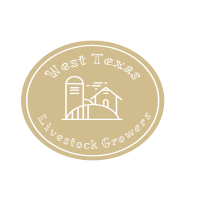 Producers tend to have a love/hate relationship when it comes to supplements. On the one hand they love how it improves the performance of their cattle but on the other they hate that it adds to their expenses. It is for this reason that producers tend to not feed supplements unless they absolutely have to.
Producers tend to have a love/hate relationship when it comes to supplements. On the one hand they love how it improves the performance of their cattle but on the other they hate that it adds to their expenses. It is for this reason that producers tend to not feed supplements unless they absolutely have to.
In order to get the most cost effective use out of feeding cattle producers should look at supplements more as an investment rather than just another expense. If used properly supplements can add increased value to both performance and their return at sale.
As we are all aware just forages alone will not provide all the necessary nutrients that your cattle need. Supplement feeding is necessary to complement what your forages provide. Though your grass may be green now the quality of it will decline as they mature later on in the year.
So how do you get the most effective use of supplements?
Choose best supplement
Choosing the correct supplement to feed is the first step in doing this. The way to look at this is that it is about supplementation not substitution of the forages that are already available. You should go with one that “fills in the gap” of what your forages may be lacking in.
In order to know what you need to supplement for you can do a forage analysis of your pastures to find out what they provide and what they don’t. This will tell you what kind of supplements you should be looking for. If you don’t want to do this just visiting with your local county extension agent is another way you can go. They can tell you what the forages in your area typically provide and what they may be lacking in.
When looking for the best supplement select the one that includes protein, energy, calcium, phosphorus, and some trace minerals. These are very important for the overall health and well being of your cattle and should be lacking in their diet.
Your decision should be based on what nutrients your forages may need supplementing and what stage of production your cattle are in.
Begin feeding supplements early
One approach that many do when feeding supplements is to only start when the cattle “look” like they need it. This approach is not very good for many reasons. Using this approach will only cost you more because your cattle are having to catch up and will tend to overconsume it.
If you provide the feed early enough this will prevent any dip in performance. Instead of trying to get them back up to where they need to be you will instead be maintaining where they are. Starting early will also allow your cattle a chance to get use to it thus reducing the chance of getting acidosis or other types of problems.
When you are beginning to feed supplements to livestock that haven’t been exposed to it for a while it is best to start slow and work your way up. This again will reduce the likelihood of them developing something like bloat or acidosis which will cost you in vet bills.
Let’s say you are wanting to start feeding grain as a supplement. A study by the University of Wisconsin suggests that you start with a 50/50 mixture of grain and forage. Then over the span of 2 weeks you can increase the percentage of grain in the diet.
Place supplements near water source
A supplement will do you no good if the cattle won’t eat it. Cattle are creatures of habit and will not go out of their way for feed. So where you place the feed bunk is very important.
When starting to provide feed place the bunk near areas where cattle tend to gather. These are usually places near a water source, shaded loafing areas and things like that. Putting it near where they usually hang out will give them a chance to adjust to it.
Once they have been consuming it for a little while you can then move further out to different areas in the pasture. This can be helpful in getting them to graze in certain areas that tend to be underutilized. I discuss more in depth about how you can do that here.
Clean feeder trough regularly
Making sure that the feed remains fresh is just a good idea health wise. You should always inspect the feed to make sure that it remains dry and remove any wet feed. Removing wet feed will prevent mold and rot from forming.
This is even true if you are providing supplements in an enclosed bunk such as a range feeder with an adjustable feeder gate. Any moisture or rain recently can make the feed directly behind the gate to clump together and get moldy which will stop it from flowing down properly.
Review
Providing supplements can become an investment that improves your return if you follow certain steps
- Choose the best supplement
- Begin feeding it early so their is no drop in performance
- Place near a water source or loafing area
- Regularly clean the trough to make sure mold doesn’t set in



